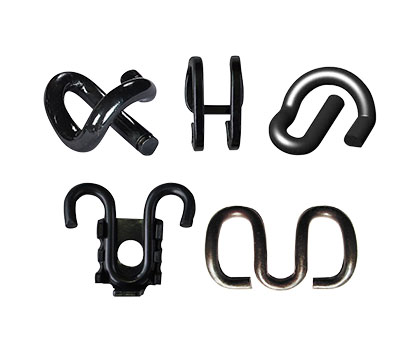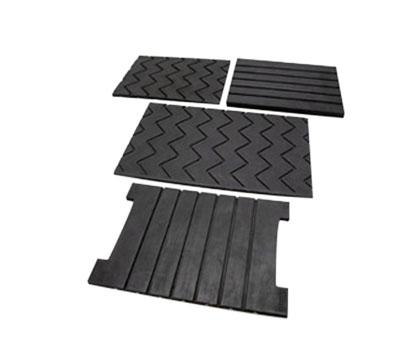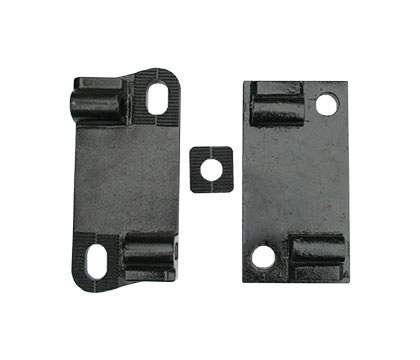Railroad Tie Plates for Steel Rails
Railroad tie plate is generally tapered at either end in order to improve stability and reduce torsion and twisting along the steel rails. Rails that are installed with rail plates are able to better maintain their positions, which can help standardize the width and gauge of the track along their length. The engineers and builders usually adopt rail plates to improve the longevity of a new track installation and to ensure safety for passengers and railway workers.
According to different applications and designs such as Europe, America, Russia, and China, the railroad tie plates have been respectively made by the hot-rolled method, forged method or cast method.
Some Terms of Railroad Tie Plates Dimensions

As a more professional railroad tie plate manufacturer, let us tell you some terms of railroad tie plates dimensions.
- 1.Eccentricity: the distance from the shoulder to the edge of railroad tie plate at right angles to the shoulder is larger on the field side than the gage side to compensate for greater tendency of the field end to cut into the sleepers; the horizontal distance from middle of the rail seat to middle of the railroad tie plate is the eccentricity.
- 2.Field side: the end of railroad tie plate designed to be located on the opposite side of the rail from the centerline of track.
- 3.Gage side: the end of steel rail tie plate designed to be located closest to the centerline of track.
- 4.Hold down holes: they are located on the plate away from rail seat. The holes do not allow spikes to contact the edge of rail base. So they are also called anchor spike holes.
- 5.Length: overall dimension of the plate at right angles to the rail it bears.
- 6.Discussion—Steel rail tie plates of different length can be used with a given rail section with the length selected based on traffic density.
- 7.Line holes: they are located at the edge of the rail seat. The holes allow the spikes to contact the edge of rail base.
- 8.Rail seat: the part of railroad tie plate that bears the rail.
- 9.Rail seat cant: steel rail tie plates are generally rolled with rail seat and not parallel to the plate base so that rail head is tilted toward the centerline of the track to help offset lateral thrust and provide better wheel bearing on rail head.
- 10.Rolled width: the dimension of the finished section as it leaves the rolls and is equal to the length of railroad tie plate.
- 11.Sheared length: the dimension to which the finished section is cut and is equal to the width of steel rail tie plate.
- 12.Shoulder: a ridge parallel to the rail is designed to keep holding the rail in position.
- 13.Discussion: the height of the shoulder is about equal to the thickness of the edge of the rail base. If a plate has a single shoulder, the shoulder is located on the field side of the rail seat to resist the outward thrust of the rail. A double shoulder railroad tie plate has an additional shoulder on the gage side of rail seat. Single shoulder railroad tie plates may accommodate a desired rail section by adjusting the punching of the spike holes on the gage side to match the width of the rail base. Double shoulder railroad tie plates are limited to a single rail base width.





